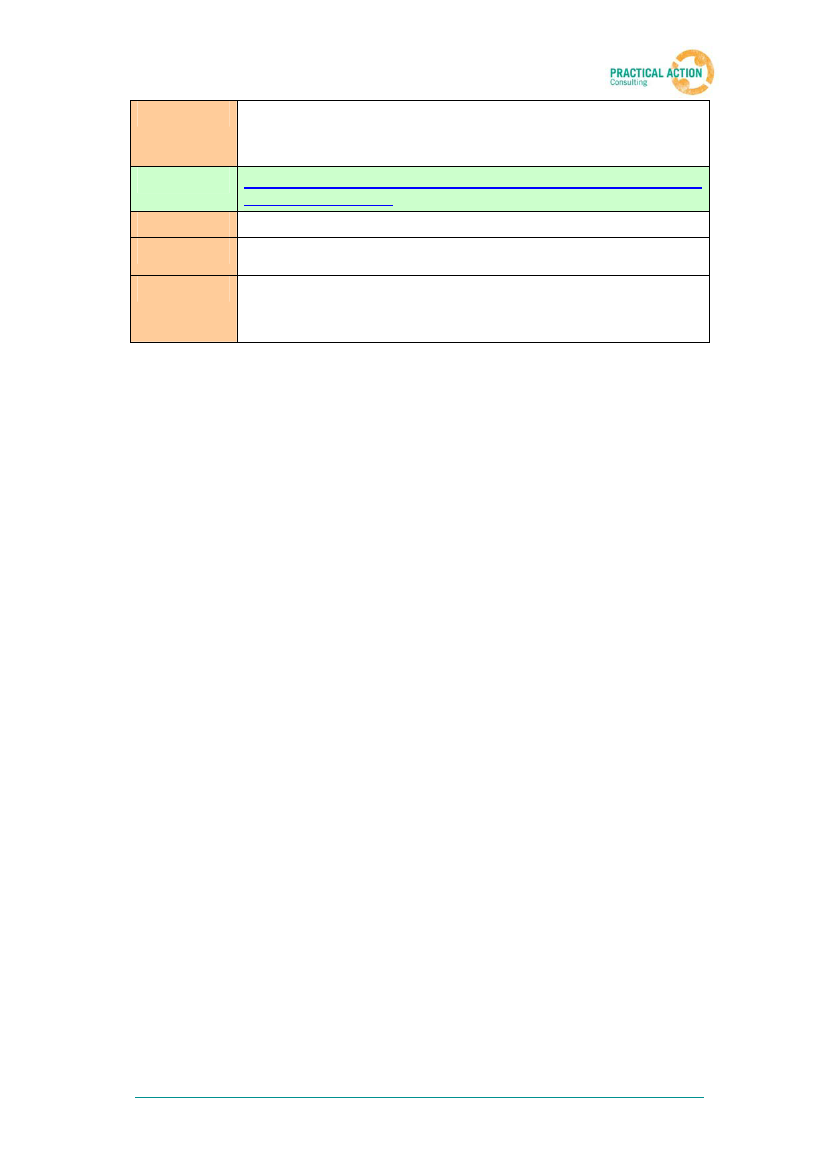
Description
Title
Toolkit
Focus
Description
This manual tries to make a case for the advantages of doing comprehensive,
rather than bitty and irregular, M&E. It offers advice and ideas about planning and
doing M&E and suggests methods for carrying out the various tasks. But first we
will explain how to find your way around the sections.
Gender and Energy for Sustainable Development: A Toolkit
and Resource Guide
UNDP and ENERGIA
Gender and energy. Section on indicators incorporating gender and energy
sensitivity
This toolkit and resource guide outlines the linkages between gender and energy
in the context of sustainable development and provides suggestions and materials
on how to address energy poverty by integrating gender and energy sensitivity into
development programmes, projects, and policies.
6. Summary and recommendations
Renewable energy resources can be a cost effective and responsive resource on
which to build rural development. There are a range of mature appropriate RETs
that empower people in meeting their energy needs. A range of effective
operational models and end-user finance mechanisms have been established and
the climate for raising investment finance and working capital is well mapped.
However, decentralised renewables bring with them their own challenges; there is
no “one size fits all” answer to renewable energy projects. Practitioners should
consider the key dos and don’ts of decentralised renewable energy projects.
DO:
• Assess energy needs and priorities of end users. First assess the
needs and resources of the beneficiaries, and the available local natural
resources. Participation of beneficiaries is essential during the
consultation process. Projects should aim to target the priorities of the
beneficiaries and meet their basic needs first.
Women and men may have different energy needs due to traditional
gender roles, household responsibilities, and low social and political
status; assessment, planning and design activities should include a focus
on gender issues.
• Encourage ownership of the technology. Participation from
beneficiaries during all stages of the project cycle is important in
encouraging a sense of ownership and increasing their understanding of
the technology; the users should be involved in assessments, planning,
implementation and M&E activities. The project should ensure a formal
hand over of the technology to the user, user representatives within an
agreed governance structure or an operating energy enterprise. It is
advisable to do so in writing, stating ownership and responsibilities of the
different stakeholders.
• Build local capacity to operate and maintain the technology. Proper
operation and maintenance (O&M) procedures are essential in ensuring
energy technologies can continue to work for their full life. Local capacity
to manage O&M is therefore very important. The project needs to consider
Renewable Energy to Reduce Poverty in Africa
37